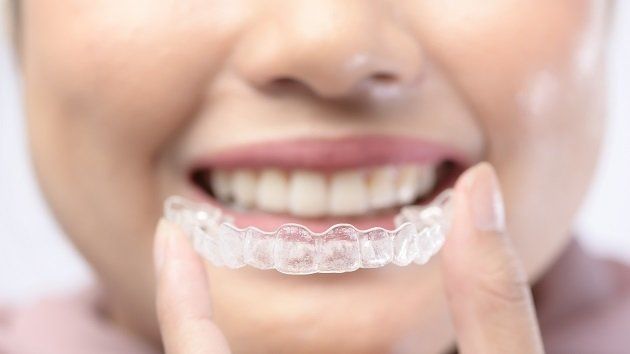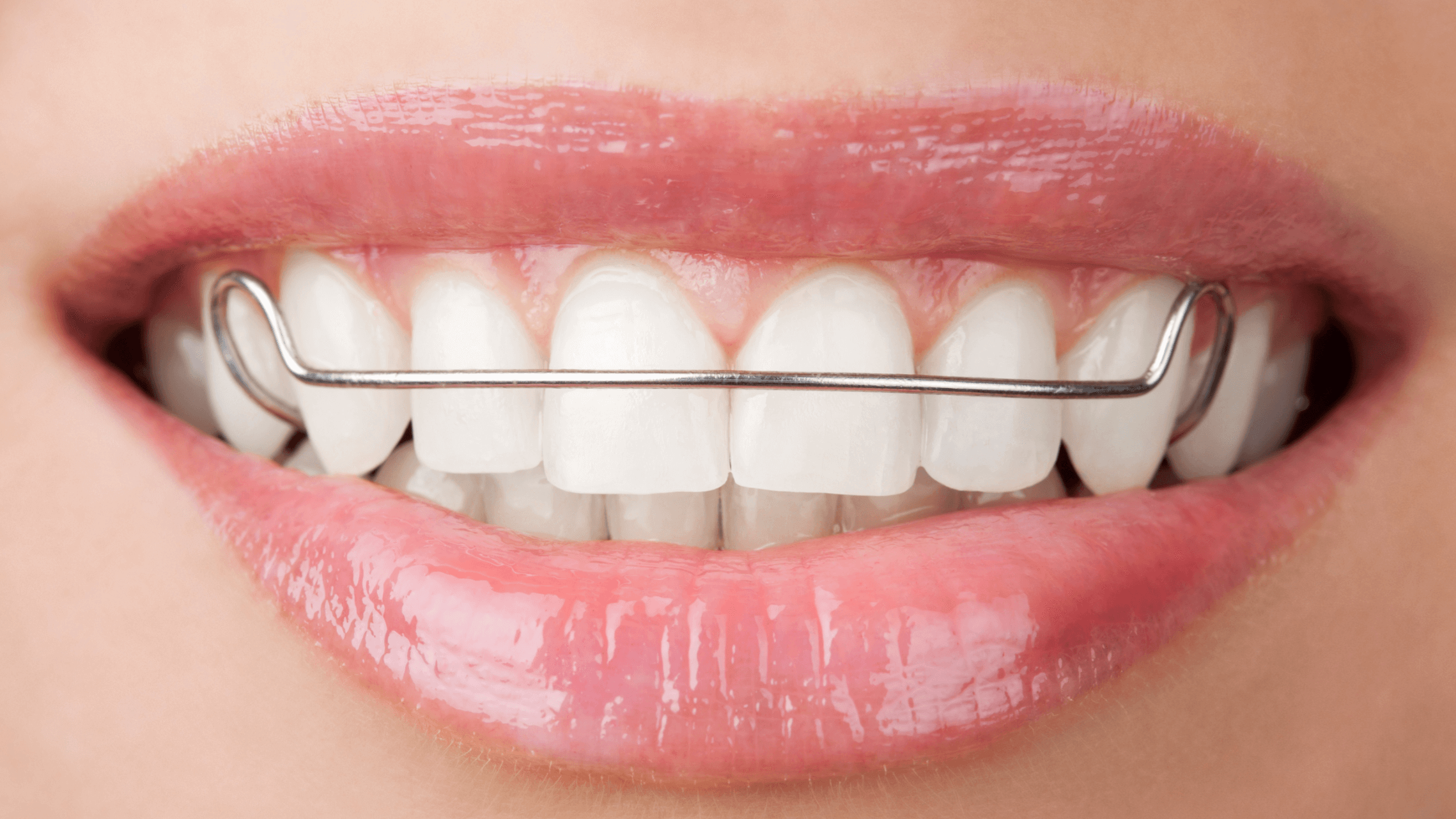Discover the Advantages of Invisalign for a Perfect Smile Improvement
Discover the Advantages of Invisalign for a Perfect Smile Improvement
Blog Article
Invisalign vs. Standard Braces: Which Option Is Right for You?
When thinking about orthodontic treatment, the choice between Invisalign and traditional braces presents numerous important aspects that warrant cautious examination. Invisalign provides a very discreet alternative with removable aligners, while traditional dental braces offer an extra visible yet reliable service for extreme imbalance.
Summary of Therapy Options

On the other hand, conventional dental braces are composed of metal braces and cords that are adhered to the teeth. This technique uses continual stress gradually to achieve alignment. While efficient for intricate orthodontic issues, standard braces require regular visits for modifications and can present difficulties in preserving oral health due to the difficulty of cleansing around brackets and cords.
Both options have their qualities, and the option often depends upon certain dental conditions, way of life choices, and person compliance. Inevitably, getting in touch with an orthodontic specialist is critical for determining the most suitable treatment strategy tailored to individual demands. Recognizing the nuances of each alternative can substantially influence the overall success of orthodontic therapy.
Visual Factors To Consider
A substantial element influencing the option in between Invisalign and standard dental braces is the visual charm each treatment uses. Invisalign aligners are crafted from clear plastic, making them basically unnoticeable when worn. This very discreet look is particularly attracting adults and teenagers that might really feel uneasy regarding their orthodontic therapy. The ability to maintain an all-natural smile throughout the positioning procedure can significantly improve the patient's self-confidence in professional and social settings.
On the other hand, standard braces contain metal brackets and wires, which can be more obvious. While developments in orthodontic innovation have caused the advancement of smaller brackets and colored elastics, traditional dental braces still preserve an even more noticeable profile. For some individuals, the visibility of dental braces might prevent them from looking for essential treatment.
Eventually, the choice between Invisalign and standard braces might rest on individual choices concerning aesthetic appeals. Clients who prioritize discernment frequently lean toward Invisalign, while those that are less concerned regarding presence might select traditional dental braces. Comprehending the visual implications of each alternative is vital for making an educated choice that straightens with one's lifestyle and preferences.
Comfort and Convenience
&srotate=0)
In terms of ease, Invisalign aligners are detachable, allowing clients to appreciate their favorite foods without restriction and maintain optimum oral hygiene. Brushing and flossing are simplified, as the aligners can be secured during these routines, whereas standard dental braces require mindful maneuvering around wires and braces.
In comparison, typical dental braces demand normal adjustments, making them less hassle-free for those with hectic schedules. Overall, the convenience and comfort of Invisalign make it an attractive selection for many individuals looking for orthodontic therapy.
Treatment Period and Effectiveness
While both Invisalign and traditional dental braces are reliable in remedying dental imbalances, the period of treatment can vary dramatically between both alternatives. Usually, Invisalign treatment can take anywhere from 12 to 18 months, relying on the complexity of the situation. The clear aligners function by slowly changing teeth right into their preferred settings, and normal follow-ups with an orthodontist aid guarantee development continues to be on the right track.
On the other hand, standard braces often need a longer commitment, usually varying from 18 months to 3 years. This results from their fixed nature and using braces and cords, which can be extra effective for serious imbalances and intricate cases (Invisalign). The therapy performance of typical dental braces is well-documented, as they permit specific adjustments and higher control over tooth movement
Eventually, the option in between Invisalign and conventional dental braces might pivot on both the awaited therapy period and the particular dental concerns handy. Consulting with an orthodontist is crucial, as they can give customized suggestions based upon specific needs, making certain the selected technique aligns with desired durations and outcomes.
Price Contrast and Insurance Coverage Alternatives
Cost plays a substantial look at more info duty in the decision-making process for people thinking about orthodontic treatment, whether selecting Invisalign or conventional dental braces. On average, the price of Invisalign varieties from $3,000 to $8,000, while typical braces normally cost between $2,000 and $6,000. Variables affecting these prices consist of the intricacy of the instance, the duration of treatment, and geographical location.
Insurance policy protection can considerably affect out-of-pocket expenses. Numerous oral insurance policy plans provide partial coverage for orthodontic therapies, yet the specifics can vary extensively. It is vital for people to review their insurance coverage policies to figure out the extent of coverage for either alternative. Generally, typical dental braces might be more frequently covered by insurance coverage strategies compared to Invisalign, which some insurance companies categorize as an aesthetic treatment.
In addition, numerous orthodontic practices provide versatile layaway plan, making you could try these out both treatment choices extra easily accessible. Clients ought to ask about potential funding options and discount rates for ahead of time repayments. Reviewing the total expense, consisting of insurance policy advantages and layaway plan, is necessary for making an informed choice that straightens with both visual preferences and budget plan considerations.

Verdict
In recap, the selection in between Invisalign and standard dental braces pivots on several factors, consisting of aesthetic preferences, convenience, therapy period, and expense. Invisalign provides a discreet, detachable option that facilitates dental hygiene and nutritional versatility, while standard dental braces might be extra appropriate for complex oral problems and usually come at a reduced cost factor. Eventually, consultation with an orthodontist is necessary to analyze specific circumstances and determine one of the most appropriate treatment click for more option for achieving ideal dental alignment.
When taking into consideration orthodontic therapy, the selection in between Invisalign and typical braces provides a number of crucial factors that warrant cautious evaluation.Comparing Invisalign and typical braces discloses unique treatment alternatives for orthodontic modification.While both Invisalign and typical dental braces are reliable in dealing with oral misalignments, the period of treatment can differ significantly in between the two choices.Expense plays a substantial function in the decision-making procedure for people thinking about orthodontic therapy, whether opting for Invisalign or standard braces.In recap, the option between Invisalign and conventional braces hinges on multiple factors, consisting of aesthetic preferences, comfort, treatment period, and expense.
Report this page